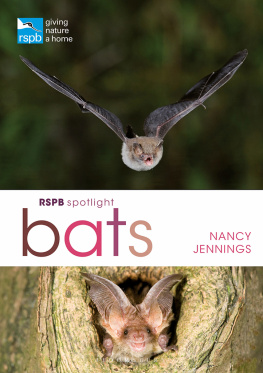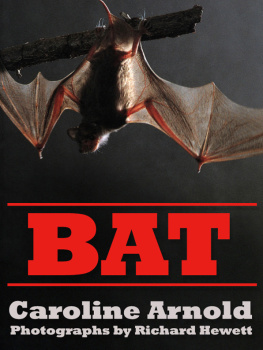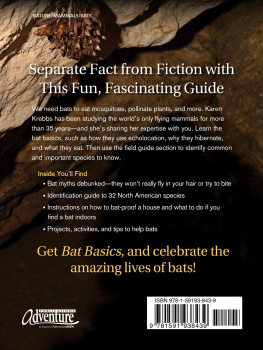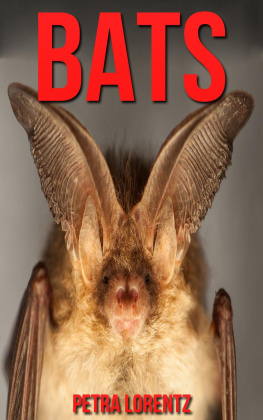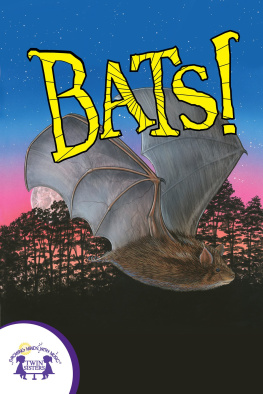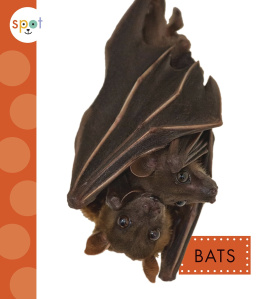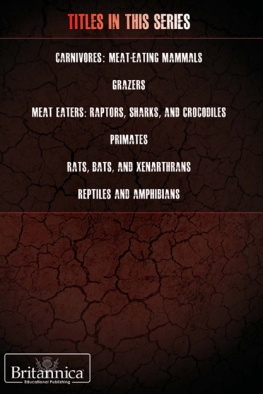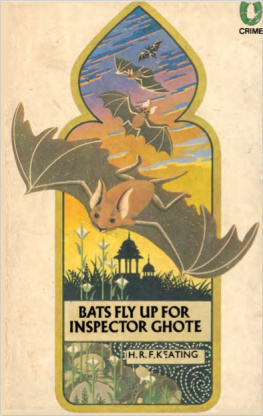
Dedication
In loving memory of my great friend Kate Barlow (19702015), batologist extraordinaire, who used to say dont be sad its over, be glad it happened.
BLOOMSBURY WILDLIFE
Bloomsbury Publishing Plc
50 Bedford Square, London, WC1B 3DP, UK
This electronic edition published in 2018 by Bloomsbury Publishing Plc
BLOOMSBURY, BLOOMSBURY WILDLIFE and the Diana logo are trademarks of Bloomsbury Publishing Plc
First published in the United Kingdom, 2018
Copyright Nancy Jennings, 2018
Nancy Jennings has asserted her right under the Copyright, Designs and Patents Act, 1988, to be identified as Author of this work
For legal purposes the constitute an extension of this copyright page
All rights reserved
You may not copy, distribute, transmit, reproduce or otherwise make available this publication (or any part of it) in any form, or by any means (including without limitation electronic, digital, optical, mechanical, photocopying, printing, recording or otherwise), without the prior written permission of the publisher. Any person who does any unauthorised act in relation to this publication may be liable to criminal prosecution and civil claims for damages.
Bloomsbury Publishing Plc does not have any control over, or responsibility for, any third-party websites referred to or in this book. All internet addresses given in this book were correct at the time of going to press. The author and publisher regret any inconvenience caused if addresses have changed or sites have ceased to exist, but can accept no responsibility for any such changes
A catalogue record for this book is available from the British Library
Library of Congress Cataloguing-in-Publication data has been applied for.
ISBN: 978-1-4729-5005-5 (PB)
ISBN: 978-1-4729-5004-8 (eBook)
ISBN: 978-1-4729-5003-1 (ePDF)
To find out more about our authors and their books please visit www.bloomsbury.com where you will find extracts, author interviews and details of forthcoming events, and to be the first to hear about latest releases and special offers, sign up for our newsletters.

For all items sold, Bloomsbury Publishing will donate a minimum of 2% of the publishers receipts from sales of licensed titles to RSPB Sales Ltd, the trading subsidiary of the RSPB. Subsequent sellers of this book are not commercial participators for the purpose of Part II of the Charities Act 1992.
Contents

Meet the Bats

The Common Pipistrelle was believed to be the smallest of the 17 bat species that live and breed in the British Isles; however, that position is now contested by the recently discovered Alcathoe Bat.
Bats are not the most straightforward animals to get to know. They flit around under cover of darkness, so we rarely see them, and make sounds that are extremely loud but mostly above the range of human hearing, so we cannot hear them. Bats are sometimes viewed, and often portrayed in the media, as weird, creepy, scary or blind, as bloodsucking vampires or fiends, as familiars of wizards or as vital components of witches magic spells. But take a closer look and you will find that bats are astounding and fascinating creatures.
Bats are incredible, but their abilities mostly remain hidden because they are stealthy and rarely seen. Perhaps that is why a close encounter with a bat is so special, and why I still remember the first time I caught a bat in a net as a research student. I was instantly hooked. The warm, silky, stretchy wings were impressive, but it was the bats feisty personality that struck me. Looking into the beady eyes of a minuscule bat while holding it gently between your finger and thumb, you might expect it to be terrified, but I received the distinct impression that it was grumpy, outraged and indignant; if it could talk, it would have been ordering me to let it go!

Greater Horseshoe Bat in typical slow, fluttering flight, using echolocation (see ) in an attempt to capture a moth.
What makes a bat?
The evolution of bats (see ) took place over 6070 million years and was shaped by interactions with other animals and plants. These interactions resulted in the incredible adaptations that bats have today: the ability to fly, to sense their environment, to make the most of the energy they get from their food and to live a nocturnal life.
Alongside their all-important wings, bats have other special adaptations. Their hind feet and legs allow them to hang upside-down when resting; they can take off, land, mate and even give birth from this topsy-turvy perspective. Bat species in cold climates can hibernate to save energy in winter when food is scarce, and all bats can use a great deal of energy to power their flight.

Worldwide, the variety of habitats, foods and lifestyles adopted by bats have resulted in impressive diversity. The Spotted Bat is a black and white insect-eater from North America.
Many bats find their way around by making echolocation calls and listening to the echoes they produce. The complex, high-pitched calls reflect from, or echo off, objects; from these reflections the bats can tell how far away and in what position the objects are, and gauge their texture. They use this special adaptation to detect food in the dark and for orientation. Bats have also evolved ways to locate their young among countless other bats, and to find mates.

Bats can drink while they are flying; this Natterers Bat is about to take a sip from a pond.

Some bats use their sense of smell to find food. Here, a Common Blossom Bat the smallest species of the Pteropodidae family is feeding on nectar from a flower in Australia.
Yin and Yang
Biologists today place bats in the order Chiroptera, which is divided into two suborders: Yinpterochiroptera and Yangochiroptera. Yinpterochiroptera comprises the families Pteropodidae (186 species including the flying foxes), Rhinolophidae (horseshoe bats) and five others: Craseonycteridae (one species: the tiny Bumblebee Bat; Craseonycteris thonglongyai), Hipposideridae (Old World leaf-nosed bats), Megadermatidae (false vampires), Rhinopomatidae (mouse-tailed bats) and Rhinonycteridae (trident bats). Yangochiroptera comprises all the remaining 14 families of Chiroptera, including the Vespertilionidae (evening bats), the largest family, which has 300 species worldwide and many representatives in Europe.

